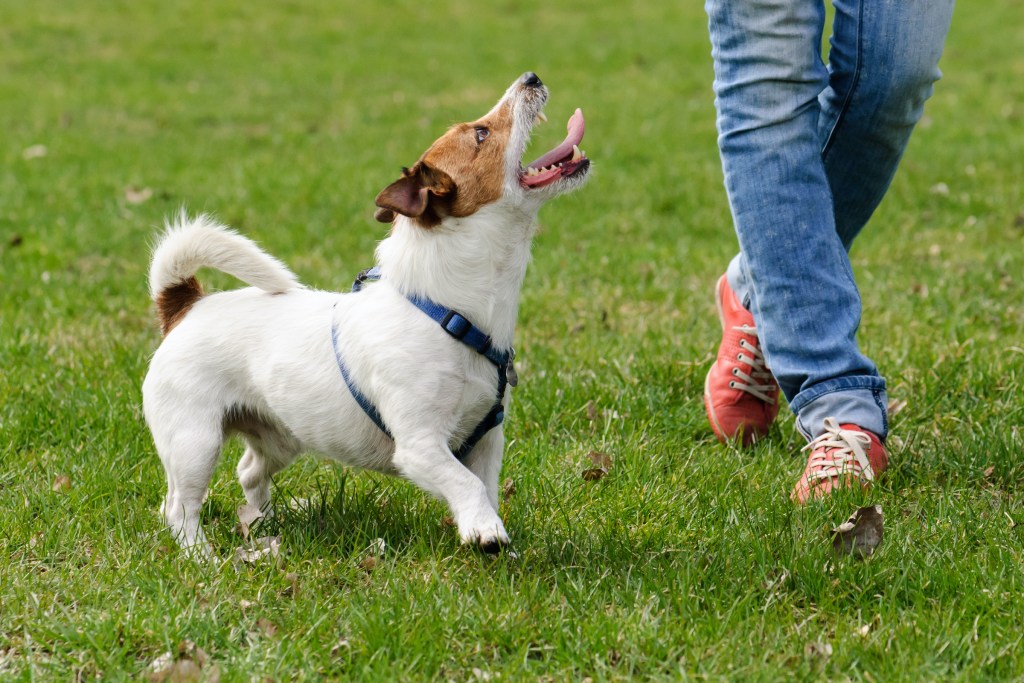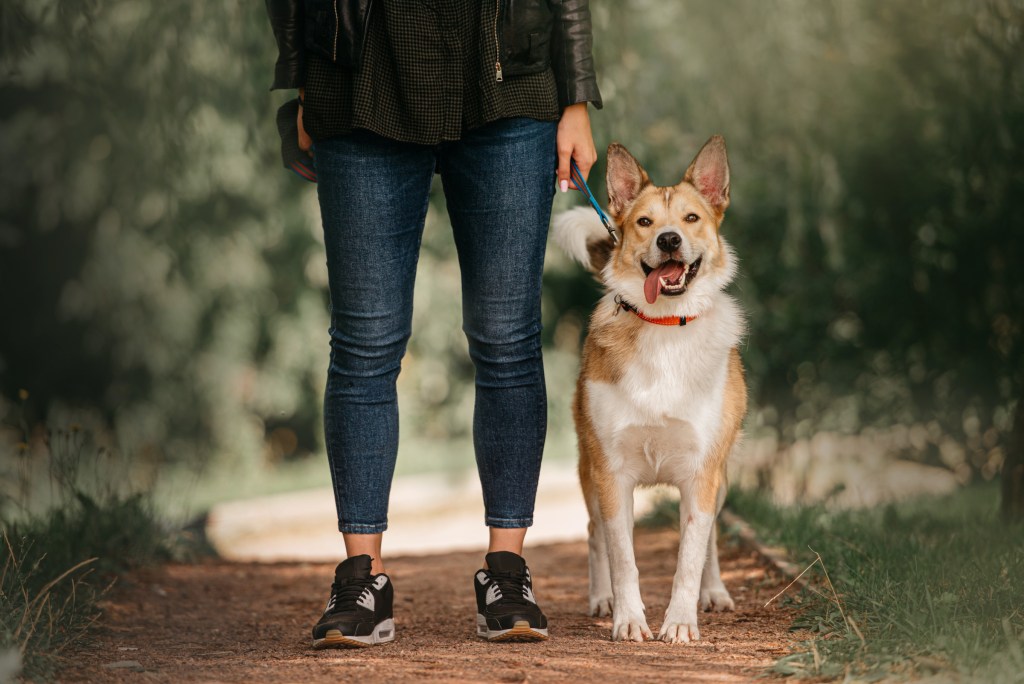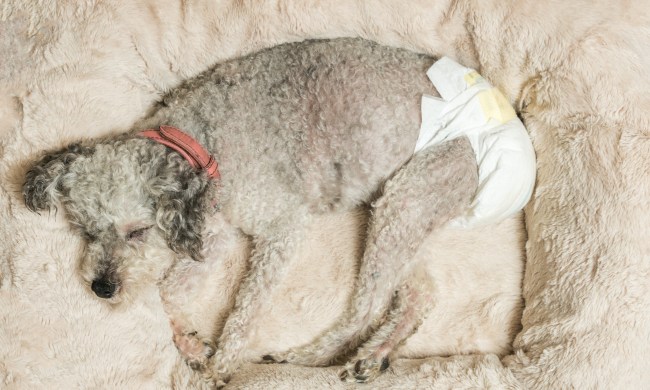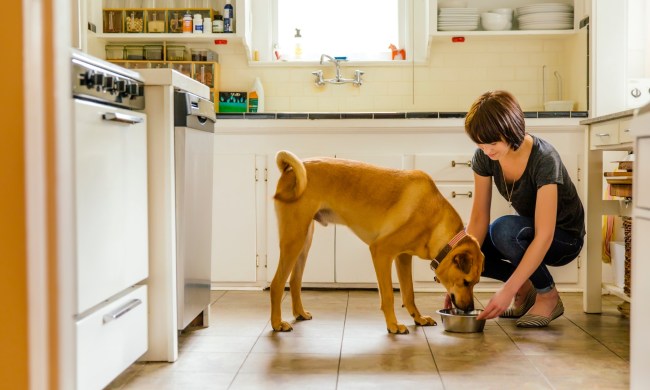The most important commands for your dog will likely be sit, stay, and off, but teaching your dog to "stand" can be equally helpful (and fun). You might use this cue when it’s time for your pup to stand still for grooming or as part of your normal obedience routine. No matter what you decide to do with it, stand is a great command for training beginners, so why not add it to your pet's repertoire? Here’s how to teach a dog to stand.

How to train your dog to sit
For your dog to figure out their stand, they’ll have to start, well, not standing. Sitting will be the easiest transition, so it might be helpful to start by teaching your pup to sit on command. This is how to get your pet to master this basic trick.
Step 1: Find a good training space and time.
Don't work with your dog too late at night or just after a long walk when they're exhausted. Settle on a distraction-free location, perhaps in the afternoon or evening after their dinner.
Step 2: Grab a treat.
Using a treat will be the easiest method for getting your dog to sit without realizing they're even learning. Since you'll be doling these out with abandon, find a low-calorie option.
Step 3: Use the food to guide your dog.
Begin by holding the treat in front of your fur baby’s nose, then move it up and back — above their head. As they look up, they’ll tilt their head back and naturally sit to keep balance.
Step 4: Give praise.
When they do finally sit — awesome! Praise and reward your pup immediately so they know what they're doing right. If you've decided to go the click route, you'll use the sound to mark success and then give them a treat after.

How to take them from the sit to a stand
Now that they have the basics down, it's time to up the game. Once your pup has mastered sit, you can add a challenge by rewarding them for standing.
Step 1: Break out the snacks again.
In the same way you taught the first skill, use a treat to entice your dog to sit. Then bring the treat toward you so they’ll have to stand to move toward it. When they do, praise and reward them!
Step 2: Keep up the positive reinforcement.
Take some time to repeat this process until your pooch gets the hang of things. Reward as immediately as possible to make things clear for your pup. And be patient — they’ll get it!
Step 3: Add a verbal command.
It’ll take some practice before they master this new skill, but once they do, you can add in a verbal command. After another week or so, try the command without the treat — but don’t forget to indulge them after they complete the desired behavior!
Step 4: Add in hand gestures.
Many pet parents like to take advantage of more than one of their dog’s superior senses, and gestures are a way to do that. You can choose nearly any gesture you can think of as long as you stay consistent and use the action at the same time as your verbal cue.
Make sure to introduce your gesture only after your pup has mastered the command and the verbal cue, or you might risk confusion!
Step 5: Practice, practice, practice.
When all is said and done, practice makes perfect. Training is often a trial-and-error experience, but in the end, you and your furry friend will be all the closer for it. Who said training can’t be fun (and delicious)?
Many pups who master the stand command will do well to learn stay next. These two commands work together seamlessly to keep your pup safe wherever you are — as long as they can listen, of course. This is why it’s important to take your time when training your dog, even if you’re frustrated or feeling behind. Besides, neither one of you will feel good if you’re in a funk, so don’t forget to take breaks, too!




